#calla fletcher
Text
closed starter for @urbnlgnds (calla)
location: calla's place

Despite knowing full well that Calla had a roommate while he didn't, Brian was still entirely too nervous to invite her over. He was a slow unpacker, and he was a little embarrassed at how small his apartment was compared to hers (but he also didn't have a roommate to split bills with).
"I don't know how you do it," he admitted, hearing Parker's voice behind her closed door - clearly the redhead was streaming something. "Maybe it's just because I lived in a group home for so long, but the idea of roommates kind of makes me feel claustrophobic."
6 notes
·
View notes
Text
A catalogue of names that are just straight up normal words
Female
Acacia
Amber
Amethyst
Amity
Anemone
Anise
April
Aria
Aspen
Aster
Aura
Aurora
Autumn
Avalon
Avril (April, French)
Azalea
Azure
Bee
Beryl
Blanche (White, French)
Blondie
Blossom
Brandy
Bunny
Burgundy
Cadence
Calanthe
Calla
Camellia
Candy
Caprice
Chalice
Charisma
Charity
Chastity
Cherish
Cherry
Clarity
Clematis
Clemency
Columbine
Comfort
Coral
Coriander
Crystal
Daffodil
Dahlia
Daisy
Dawn
Delight
Delta
Destiny
Diamond
Dot
Dove
Dream
Easter
Ebony
Eglantine
Emerald
Epiphany
Essence
Fae
Faith
Fancy
Fawn
Felicity
Fern
Flower
Gay
Genesis
Genie
Gill
Ginger
Glory
Grace
Harmony
Hazel
Heather
Heaven
Holly
Honey
Honour
Hope
Hyacinth
Iris
Ivy
Jacinth
Jasmine
Jonquil
Journey
Joy
July
June
Kay
Kitty
Lacy
Lark
Laurel
Lavender
Liberty
Lilac
Lily
Lotus
Love
Magnolia
Maple
Marigold
May
Meadow
Melody
Mercy
Merry
Minty
Miracle
Missy
Misty
Modesty
Monday
Myrtle
Nan
Nanny
Olive
Opal
Paisley
Pansy
Patience
Peace
Pearl
Pen
Penny
Peony
Petal
Petunia
Piety
Piper
Pleasance
Poppy
Porsche
Posy
Precious
Primrose
Princess
Prissy
Queen
Rainbow
Rose
Rosemary
Rosy
Royalty
Ruby
Rue
Sapphire
Scarlet
Scout
Serenity
Shell
Sherry
Sienna
Spirit
Spring
Star
Sue
Summer
Sunshine
Symphony
Tansy
Tawny
Teal
Temperance
Tempest
Tiara
Topaz
Treasure
Trinity
Unique
Unity
Velvet
Verity
Violet
Willow
Winter
Male
Ace
Archer
Art
August
Baker
Bishop
Blaze
Brand
Brock
Bud
Buddy
Buster
Case
Cash
Chance
Chip
Chuck
Clair (Light/clear, French)
Clay
Clement
Cliff
Colt
Constant
Coy
Crew
Curt
Dane
Deacon
Dean
Den
Drake
Duke
Dutch
Earl
Earnest
Fisher
Fletcher
Flint
Ford
Forest
Foster
Fox
Frank
Garland
Gene
Gore
Grant
Gray
Grey
Griffin
Gunner
Guy
Hale
Hall
Hardy
Heath
Herb
Jack
Junior
Kelvin
King
Kip
Lane
Legend
Leo
Major
Mark
Marshal
Mason
Mat
Merit
Messiah
Miles
Moss
Newt
Noble
Norm
Pace
Peers
Peregrine
Pierce
Piers
Placid
Porter
Prince
Prosper
Ray
Read
Red
Reed
Rich
Ridge
Rob
Rocky
Rod
Roman
Rusty
Satchel
Scott
Shaw
Shepherd
Sly
Smith
Sonny
Spike
Stan
Sterling
Stew
Stone
Tad
Talon
Tanner
Teddy
Tiger
Trace
Van
Walker
Ward
Webster
Will
Wilt
Wolf
Woody
Wright
Unisex
Alpha
Angel
Ash
Berry
Blessing
Briar
Brook
Carol
Cat
Cedar
Christmas
Cyan
Dell
Derby
Dusty
Flick
Fortune
Gale
Garnet
Happy
Harper
Haven
Haze
Honor
Hunter
Indigo
Jade
Jewel
Justice
Kit
Lake
Lucky
Max
Merle
Noel
Ocean
Page
Patsy
Phoenix
Praise
Prudence
Rain
Raven
Reign
River
Rowan
Royal
Sage
Sandy
September
Sequoia
Silver
Sky
Sparrow
Storm
Sunday
Sunny
Temple
Wisdom
16 notes
·
View notes
Note
What is a common, classical name you feel Everlark would name their baby? Preferably a girl. Asking for a friend.
Dahlia.
I feel they would stick with the flower tradition in honor of her family.
Other names @rosegardeninwinter and I use are Calla (this is who I see as the dancing girl), Prudence, Ivy, Phoebe, and Vera.
As for boys, I love Fletcher, Gideon, and Alder. Though again, I always use Sage (after her dad) for their son.
6 notes
·
View notes
Text
Birthdays 12.20
Beer Birthdays
Joseph Liebmann (1832)
Charles William Bergner (1854)
Ron Silberstein (1960)
Five Favorite Birthdays
Edwin Abbott; writer (1838)
David Breashears; mountaineer, filmmaker (1955)
Bobby Colomby; rock drummer, singer (1944)
George Roy Hill; film director (1921)
Alan Parsons; rock musician, keyboardist (1949)
Famous Birthdays
Jenny Agutter; English actor (1952)
David Bohm; physicist (1917)
Billy Bragg; English rock musician (1957)
Charlie Callas; comedian, actor (1924)
Peter Criss; rock drummer (1945)
Irene Dunne; actor (1898)
Harvey Firestone; tiremaker (1868)
John Fletcher; English writer (1579)
Uri Geller; psychic, spoon-bender (1946)
Thomas Graham; chemist (1805)
Bob Hayes; sprinter, Dallas Cowboys WR (1942)
John Hillerman; actor (1932)
Pieter de Hooch; Dutch artist (1629)
Sidney Hook; philosopher (1902)
Mike Keneally; rock musician, singer, songwriter (1961)
Suzanne K. Langer (1895)
Max Lerner; political writer (1902)
David Levine; artist, caricaturist (1926)
Peter May; Scottish writer (1951)
Tony Moore; comic book artist (1978)
Dennis Morgan; actor, singer (1908)
Lucy Pinder; English model (1983)
Chris Robinson; rock singer (1966)
Sacagawea; guide 1788, died this day 1812)
Joey Silvera; porn actor (1951)
Lara Stone; Dutch model (1983)
Robert J. Van de Graaff; physicist (1901)
Veronica Wild; porn actress (1989)
Little Stevie Wright; Australian rock singer (1948)
0 notes
Text
0 notes
Text
K. A. Tucker: Az egyszerű vadon
„A sors ismétli önmagát?
Calla Fletcher kétéves volt, amikor az édesanyja vele együtt elmenekült az alaszkai vadon és az elszigetelt vidéki életmód kihívásai elől, és elhagyta Calla apját, Wren Fletchert. Calla sosem nézett vissza, és huszonhat évesen a mozgalmas torontói életen kívül nem ismer mást. Amikor azonban az apja felveszi vele a kapcsolatot, és tudatja, hogy súlyos beteg, a lány…

View On WordPress
0 notes
Text
A Conversation With Nan Goldin on the 30th Anniversary of The Ballad of Sexual Dependency
A Conversation With Nan Goldin on the 30th Anniversary of The Ballad of Sexual Dependency
The book of Nan Goldin’s influential, intensely personal visual diary marks its 30th anniversary. Here, the photographer on the story of its making.
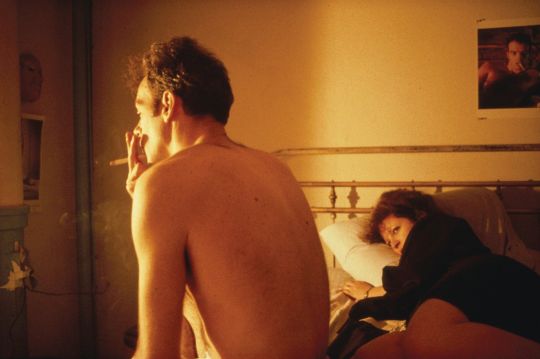
How Photographers from Nan Goldin to Jamel Shabazz Captured the Rebellious Youth of the ’80s | Artsy
From a Polaroid of a young, denim-clad Madonna to an image of two boys riding the NYC subway with a giant boombox, these images perfectly capture this era of rebellious youth.
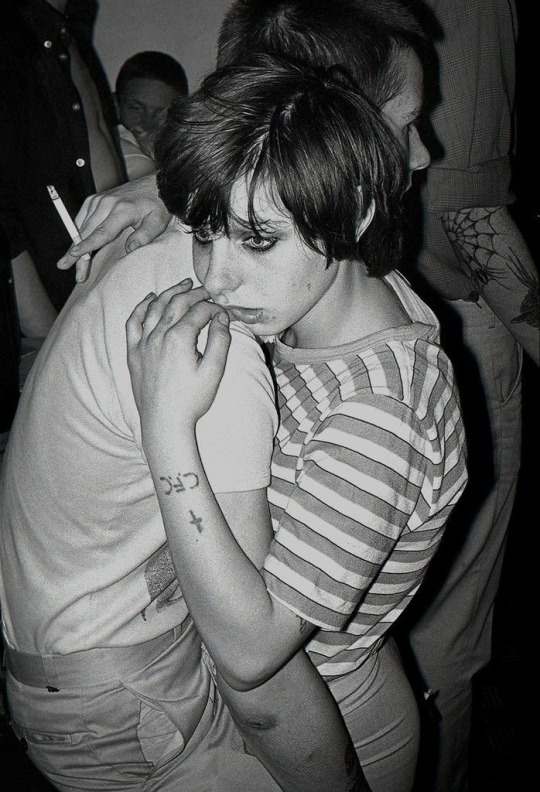

Photo: Nan Goldin / Aperture C.Z and Max on the beach, Truro, Mass., 1976 Things were probably a little raucous, probably also a little reverent in those rooms, as soundtracks spliced from Maria Callas, the Velvet Underground, Screamin’ Jay Hawkins, James Brown, and Yoko Ono played to a deeply personal visual diary of Goldin’s life, the late nights, the mornings after, the romance and sex and drugs and violence. The first audiences mirrored the characters in the photographs, her closest friends and chosen family—downtown artists and actors and filmmakers: Cookie Mueller and girlfriend Sharon Niesp, David Armstrong, Suzanne Fletcher, among them, all calling out which pictures of themselves they liked best. The photos were made largely in the years before Goldin went into detox. It was also the height of the AIDS crisis; many of the subjects of the photographs died young. “The book had become for me a volume of loss, a ballad of love,” Goldin writes in its afterword. Her color slides go straight into their bedrooms and before their bathroom mirrors, to the bars, to the street. As the title suggests, Ballad feels musical in form, too, a narrative made up of distinct movements, heightening the division between men and women, which resonate in drastically different evocations of the same experiences, intimate and spontaneous. There are separate sections of women getting ready to go out, of men getting ready to go out, of women alone, of men alone, of women bruised and beaten, of men bruised and beaten, of women with guns, of men with guns, of women and men in and out of love, living and dying.At the heart of the story is the photographer, who points the camera at herself from the same unflinching vantage: “The photo of me battered is the central image of the Ballad,” she writes. Goldin had been badly beaten by a lover, abuse that necessitated major surgery. That photograph is the hinge of the slideshow, of the book; it is also a visual echo of the loss of her sister, who killed herself when she was 18 and Goldin was 11. Shortly after, Goldin was seduced by an older man, and it’s that tension between pain, loss, and desire that propels her work. Terrified she too would die young, Goldin left home before the age of 15; eventually she moved to Provincetown, Massachusetts, where she became close to the drag queen scene; and to Boston, where she studied with photographer Henry Horenstein, who turned her on to the work of Larry Clark; and to New York City, where the Ballad would take real shape. Now she lives between New York and Europe.Since those early days, The Ballad of Sexual Dependency has been shown all over the world, the book reissued in multiple printings. This year it was on view again at the Whitney, in the inaugural exhibit at the museum’s new downtown home. Tonight at Terminal 5, it will be screened with live performances by Laurie Anderson and Martha Wainwright and other musicians, at Aperture Foundation’s celebration of the 30th anniversary of the publication of the book. Last week, when I called Goldin in New York, we talked about the evolution and constant re-editing of Ballad, the bar where she was working when she made it into the Whitney Biennial, and the relationship between photographs and memory in her work. I found her to be as open and honest as her pictures.I’ve seen Ballad in a museum setting, I’ve seen it as a video, but I’ve never seen you, in a room, screening the slideshow. And in that sense none of us will have the complete experience of some of the early slideshows. So I’d like to talk a bit about all the different forms it’s taken over the years and also how the slideshow itself has evolved.You say it can’t be seen in its early versions, which is interesting. But I actually found some recording tapes recently, though I haven’t watched or listened to them. I made them on reel-to-reel tapes for years—the soundtracks. I have different versions of them. I tried different lengths of time. Sometimes it was an hour and a half, sometimes it was 20 minutes; until 1986 I had the drag queens in the middle, between the men and the women. And then a man named François Hébel wanted to show it in Arles, France, and he said, “What do you think about moving that section?” He was scared to ask—it is a bold thing to ask an artist to change their work—and I had quite a temper at that time. But I did it. And it was a really smart move on his part.One of the things that’s so compelling about this work is that you’re making it from within. This is the world that you were part of, and yet you were able to go outside enough in the way that an artist has to go outside to some extent, enough to be able to fully see. You were outside-inside. And those early shows, the ones I wish I could have seen, were often seen by the subjects themselves.Yes, the only people in those early audiences were people in the pictures. They were shown at a downtown space run by an amazing man named Rafik who is no longer with us. I think it’s a place to buy film equipment now. But at the time there was a screening room and I would show it regularly there. I’d be holding the projectors in my hands and the bulb would burn out and I’d run home and get another bulb. And the audience would wait. The slideshows were all really handmade.I was just remembering the early black-and-white slides that were in the middle of the show then. They didn’t really have a way to make black-and-white slides at the time, so they were very high contrast, really scratchy; they were very primitive and very personal. People would say, “Oh, I like that one of me.” In a way that was what it was made for, so that people could tell me how they felt about it. They became part of it. I edited it for my friends. And sometimes friends who were living with me in the mid-’80s would help me edit it. Vivienne Dick, a Super 8 filmmaker, was a huge influence on my use of music.I read somewhere that one of the reasons you turned to slides is that it was cheaper, that you didn’t have money for paper and darkroom supplies.No, that’s not true. I started it when I was at art school in the ’70s in Boston. I went to Provincetown and then I decided to spend a winter there. Basically I learned how to drink at art school; teachers at the school collected old cars and we’d sit in the cars and drink. But I learned how to print color. And I’m still friends with people I went to school with there. That was really art school.I went to Provincetown and lived there through the winter. The way the school worked is that you would show your work three times a year and the teachers would grade it, or they’d give you advice or they’d tell you were making shit. I had no access to a darkroom there, so that’s when I started showing slides to the teachers. And a friend of mine would help me make the music. When I screened the slides at the famous “Times Square” exhibition in 1980, a boyfriend of mine was the DJ. So that was the very beginning of the slideshow. At first it was really just a series of pictures.You start taking pictures, and then you start taking more and more, and then they accumulate, and then eventually you start to shape the whole thing. I’m curious about the moment you recognized that this was becoming a body of work, and about how you arrived at this particular form?All I made were individual prints until 1978 except the ones I showed for credit. At my school, every year you’d hang your work in this huge armory in Boston as an installation, and if you won a prize you’d get money to travel. At that point I started making color prints and showing them on the wall, and I got the travel money and I went to London. There’s a series a museum wants to buy—it’s lots of skinheads that I was hanging out with then. The two months in London were some of the wildest times in my life. Literally. And I documented the whole thing. But I was always inside the work. It was never strangers. Even the skinheads. It wasn’t like I went out looking for skinheads. I stayed with them briefly until they became the soldiers for the National Front. I witnessed that. In that period I lived a really wild life. Much wilder than anybody knows.It’s a visual diary as you’ve described, but was that part of the initial impulse to photograph, “this wild time, this is going to disappear one day and photographing is my way of holding on to it”?I talk about this a lot in the intro to the Ballad and it’s true. It was not about the wild times. I never thought they would end. I was living in the moment, not documenting for the future. I think having an early death in my life, of my sister, made it more important to hold on to people. I’m aware even now that when I’m getting ready to leave a place, I photograph much more.At the same time you wrote that a photograph—That I thought it could save the person somehow. That I thought I could keep people alive. I really believed it until recently. I would light candles in churches, too. I still do that. And I also thought I could preserve the memory of the person through a photograph. But without the voice, without the body, without the smell, without the laugh, it doesn’t do much. Well, it keeps a memory, but then it becomes a memory of the picture at some point. It’s important to understand when I took the pictures I was not thinking of their later use of preserving memory because I was in the moment—I didn’t know what would be lost!You know Sally Mann in her memoir earlier this year said essentially the same thing—how photographs destroy actual memory. She was talking specifically about her friend, the painter Cy Twombly. She said the reason she remembers him so well is that she has so few pictures of him.Yes, I just did a text for my new book, Diving for Pearls—which is only out in German now, it will be out in English very soon—and I write about the difference between pearl diving and cultured pearls and I make an analogy between analog photography and digital photography. The pictures I took that came out all black, sometimes I remember those moments more strongly than I remember the ones that I photographed. It happened during some of the most important moments of my life, when the film came out black. I went to New Orleans for three weeks once with Cookie and Sharon and they were lovers at the time and they were breaking up. That was an incredibly wild three weeks and I photographed constantly. And I got 30 rolls of black film back. Except in the middle of one of the rolls there’s a picture of Cookie looking in the mirror and putting on lipstick, and written next to her on the wall it says “Angel.” It’s the only picture that came out of these 30 rolls. And the camera worked perfectly before I went and it worked perfectly when I got back. It had to be voodoo.That’s so haunted.And so my last statement in the book is, “Will voodoo ever work on digital photography?” The reason I call it Diving for Pearls is that David [Armstrong] used to say getting a good picture is like diving for pearls. You take a thousand pictures to get a good one, like oysters with the rare pearl. It’s true, and I used to say I’m not a good photographer. If anyone took as many pictures as I do, they’d be standing up here, too. It’s a lot to do with generosity, just taking thousands and thousands of pictures, and then where the art comes in is the editing.I think of them as distinct narrative forms: the individual pictures; the book; the slideshow, which is somewhere in between still and cinema. There’s that word, ballad. It’s a musical form in one sense, it’s a literary form, and especially when you talk about photographs making their own memories, well, you’re reshaping these memories all the time into new stories. Where does, say, the book fit in for you, in relation to the slideshow?It’s a book of a film, and that’s what it started as. Now it has its own life, and I love it. I want to make films; that’s my life’s dream. I haven’t made that step yet, but I’m about to. I’ve found a collaborator and now I have to find a screenwriter. But that’s all I’ve wanted to do since I was a kid and that’s why I’ve never particularly cared about photography. That’s why photography is easy for me to do. It’s not as important to me to make great pictures as it is to make a great film, which has stopped me all these years. So this is my form of making movies. And Jim Jarmusch told me in the early ’80s that he saw the slideshow as being a little bit like Chris Marker’s film La Jetée, which is also made of stills. It’s not really, because each slide is shown at the same time and it’s not repeated. I mean, I would love to make something like La Jetée, but it’s a lot more complex in the way that it uses the still.Who inspired you when you were a kid, when you first had the impulse to make films?I went to a hippie free school and we didn’t have any classes. I mean, we once had a class in Italian—once, in four years; we once had a class in American expatriates in Paris, and once a class called “Ontogeny Recapitulates Phylogeny.” We had school meetings every week, and that’s where I learned to talk, which was very important for me. Because I was practically silent; I was so shy in those years. And then David and I went to the movies three times a week. So at 15 I’d seen all of Antonioni, Jack Smith, Warhol, Morrissey, Bertolucci, Bergman, John Waters (of course), Fellini, and all the American superstar women—all the Bette Davis, all the Joan Crawford, all the Jean Harlow, all the Greta Garbo. So that was my education—cinema, from the ages of 15 to 18. And it still is. I wrote an article for Cahiers du Cinéma, they asked me to write about my favorite films. And I said that films taught me how to live. They taught me what relationships were. I learned everything I know from films.Jack Smith was at some of your early slideshows too, wasn’t he?Yes, he and I did a screening together at Rafik’s for Thanksgiving once. Things were very different back then. Artists hung out, we were all hanging out and very supportive of one another. And I remember the time the first person we knew went with a gallery and it was shocking to us. When I moved to New York in ’78, I started with a gallery, Castelli Graphics, because Marvin Heiferman, who is a genius about many things but especially about photography—Marvin became my dealer for all of the ’80s. In ’85 he invited all these curators to Rafik to come see my slideshow, and that’s how it got into the Whitney Biennial.And what else were you doing at the time, apart from the world of the pictures?I was working as a bartender, at Tin Pan Alley, this tough bar on Times Square—back when it was Times Square, not Disney World—for this amazing woman who politicized me. This was Maggie Smith. I worked at the bar first, and then Kiki Smith worked there, and Ulli Rimkus, who later opened Max Fish, and Cara Perlman and other female artists. There were a lot of street people, a lot of prostitutes and pimps and gang kids. Some of them really didn’t like what happened to the bar. It was a neighborhood bar. Maggie cooked. It was on 49th Street and there was nowhere to eat. So people from CBS Records and all these places started coming because it was the only place with good food. And it was in this Japanese tourist guide, so suddenly a lot of Japanese tourists would come in, and the Clash would come in, and the bar changed and the regulars didn’t really like it, having all these arty women working there.Well, the regulars never like a change.No, they don’t. And there was a guy who’d come in and drink something like 30 Heinekens and pass out every day. I was doing the stills for a film. I used to do stills for downtown filmmakers like Bette Gordon and my work was at the Whitney, but I was still tending bar. One day I went back to the bar and that guy had gotten up and gone behind the bar and opened the wooden case where my cameras were stored and pissed on my cameras. And I screamed like an opera diva—you could hear me all over Manhattan—and I quit. That was my way out.That’s incredible.It was. That bar really toughened me up. You know it was a lot of street prostitutes and their tricks, it was a lot of johns. Mostly they didn’t even turn tricks, they would rob them and the johns would come into the bar just screaming. And the pimps always drank Hennessy and the prostitutes drank Long Island iced tea; they wanted to get as drunk as possible on one drink. That was a very tough life people were living, sex workers and all that. At a certain point I wanted out of the bar. I still dream about it. I still dream I have to get there at a certain time.How long did you work there?Five years. And in the first few years after my shift I would go to an after-hours bar and work there and it was a lot of bad cocaine, and when it closed at 9:00 or 10:00 in the morning, we’d go to breakfast and everyone would be reading the racing forms. That went on for years, and then I started working the day shift at the bar, and that’s when I met the guy Brian who’s in the pictures.That world is resonant in the pictures of Ballad, of course, but you just described another dimension of it so vividly. I’m curious, as time went on, what influenced some of the other changes you made in the sequencing of the slideshow. There are such distinct movements—the men, the women, the babies, the abuse, the sex, the moments of dark and light, of love and loss—that emerge throughout, and like you say, the editing of that narrative is so key.Maggie really politicized me. She is the one who helped me see the work is about gender politics. And I had talked to people in Provincetown about that in the ’70s. After she became involved, I started making it more and more obviously political, to speak to her. Sometimes it was really hateful toward men and sometimes it was really positive, depending how I was feeling. Each showing was different. I made slideshows specifically for people, too. I’d put in a lot of pictures specifically of that person and dedicate it to them. It could be anyone, a friend or a lover. In ’83 I started traveling in Europe and showing it. I showed it many more times in Europe than in America. I showed it in European museums as one-off shows as early as 1983, and in underground cinemas and clubs all over Europe. It was accepted there earlier than it was in the U.S. One of the people who later became a lover of mine in Berlin, he raised his hand and said, “I’d like to be in the slideshow.” And he was, afterward!Well, that’s a pretty great come-on line. And given all those versions, given its ever-evolving status, what is your relationship to Ballad now?I thought I’d stopped re-editing it by 1992; the last soundtrack was from 1987. But I re-edited it when the MoMA bought it in 2008, and they wanted it to be the same, they wanted it to be really dark—no pictures with light. Peter Galassi and his two assistants came down to watch as we were putting it together, and every picture that had light in it, he’d go, “No.” But we put all those pictures in and they didn’t notice, or they loved them anyway. We made one copy in 2008 for MoMA and one for a friend who’s one of my biggest collectors in the world. We made that one much tougher, because he’d been a big part of the ’70s and ’80s at the Mudd Club, so we made it much more about that period. And this year I sold one to the Tate Modern and could not stop myself from editing a few categories in the analog version.That’s what I keep coming back around to: the uniqueness of each slideshow, the uniqueness of what happened in the room each time you showed it, how it was all affected by where it was being shown and who was there, and what was going on all around, what it felt like. All the things I wish I could go back in time and experience—in that sense I suppose I really think of it as a performance.That’s true. But then it became like Amy Winehouse. I felt such a strong connection with her because, you know, at the end I showed up at some fancy place in Chicago and I was too drugged to finish the slideshow, and there was a huge audience, and I know exactly how she felt when she showed up wherever it was and she couldn’t perform. I mean, I had an audience of 500 and she had an audience of probably 50,000, but it was the same feeling. And it happened to me twice. It’s really painful. I loved that movie.I haven’t seen it yet. I want to. I recently lost a friend who had dealt with some similar things, and I’ll watch the film at some point, but I can’t yet. But there was a slideshow for this friend's wake, with music playing, pictures from these very wild, free, happier, beautiful times.Oh, that’s good, it’s good they showed those.I couldn’t help but think of Ballad then, how it’s a record of loss, but of desire and love and light.Right. It can’t only be the dark moments. There’s a lot of light there, too.This interview has been condensed and edited.
0 notes
Text

Wild at Heart (2020)
#the simple wild#wild at heart#k a tucker#calla fletcher#jonah riggs#forever wild#book aesthetic#book#k. a. tucker#aesthetic#books#book aesthetics#callajonah#jonahcalla#calla x jonah#jonah x calla#the simple wild series#ka tucker#k.a. tucker#romance books#romance book#book quotes#callafletcher#jonahriggs#book quote
44 notes
·
View notes
Text



The Simple Wild headers
like/reblog if saved © maddiesflame
#headers#the simple wild#k a tucker#jonah riggs#calla fletcher#wild at heart#forever wild#the simple wild headers#jonahcalla#k.a. tucker#wild at heart headers#forever wild headers#the simple wild series#katucker#jonahcalla headers#callajonah#the simple wild header#headers the simple wild#book headers#books header#books headers#book header#headers book#headers books#header books#header book#k a tucker headers#k.a. tucker headers#book quotes#book quote headers
23 notes
·
View notes
Text
“He’s not like any other guy I’ve dated or crushed on. And while he’s capable of making my blood boil like no one else, I feel a magnetic pull toward him that I can’t explain.”
“The Simple Wild” K.A. Tucker
#the simple wild#k.a. tucker#calla x jonah#calla fletcher#jonah riggs#i miss them#when it is okay to reread a book?
14 notes
·
View notes
Photo
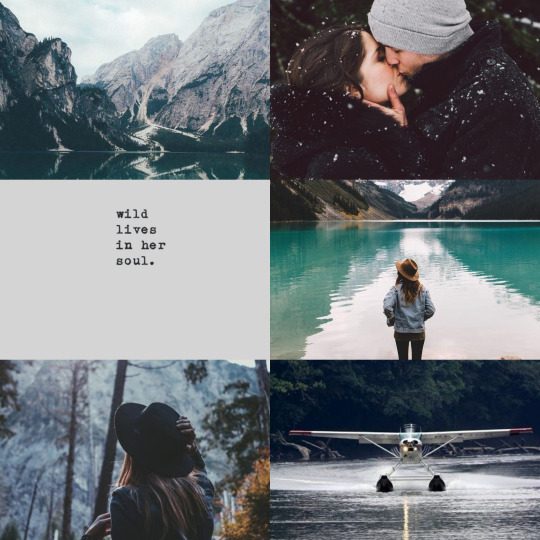

Books read in 2020: Wild at Heart by K.A. Tucker
“But tonight, this is for you and me. It’s our moment.” He rests his chin on my head. “The first night of the rest of our lives.”
I relax into him. “Does everyone know you’re such a romantic?”
“Shut up.”
#wild at heart#the simple wild#calla fletcher#calla x jonah#alaska wild#bookedit#new adult#romance books#k.a. tucker#ka tucker
93 notes
·
View notes
Photo

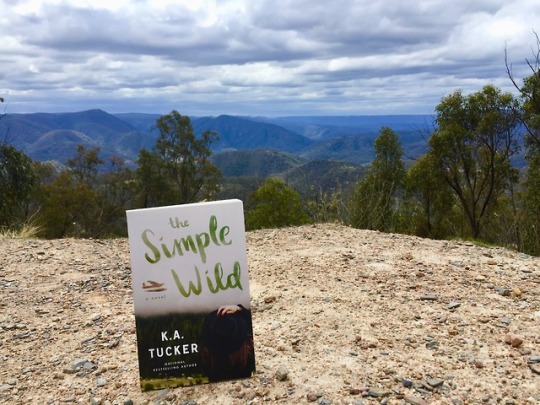
The Simple Wild by K.A Tucker in the Aussie Wild.
I’ve said it before and I’ll say it again, this book is AMAZING and if you haven’t met Calla and Jonah and the rest of the gang from Bangor, Alaska you should definitely put The Simple Wild at the top of your TBR list ❤️📚
••••
••••
This photo was taken overlooking Nattai National Park from the Wollondilly lookout on Wombeyan Caves road near the New South Wales Southern Highlands.
Nattai National Park is one of the 8 protected areas (and the most southern) that form part of the UNESCO World Heritage listed Greater Blue Mountains area.
#the simple wild#ka tucker#booklr#bookish#aussie bush#australia#aussie#books#must read#calla fletcher#jonah#reading#scenic#new south wales#southern highlands#scenery#nattai national park#wollondilly#wombeyan caves road#bookstagram#bibliophile#book photography#romance#contemporary#new adult#enemies to lovers
4 notes
·
View notes
Text
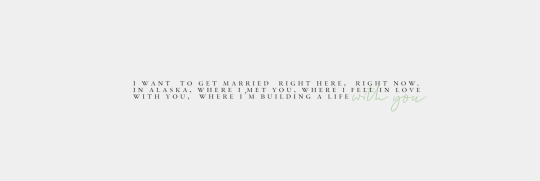

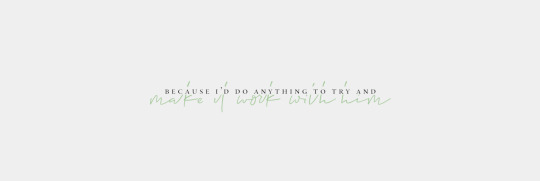




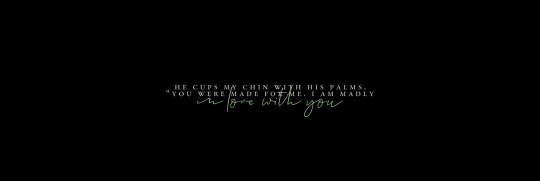
— callajonah headers
like or reblog if you use/save.
© hiloedits on twitter.
#callajonah#callajonah header#callajonah headers#romance headers#romance header#book headers#book header#the simple wild#the simple wild header#the simple wild headers#calla fletcher header#calla fletcher headers#jonah riggs header#jonah riggs headers#kat tucker
6 notes
·
View notes
Text
Birthdays 12.20
Beer Birthdays
Joseph Liebmann (1832)
Charles William Bergner (1854)
Ron Silberstein (1960)
Five Favorite Birthdays
Edwin Abbott; writer (1838)
David Breashears; mountaineer, filmmaker (1955)
Bobby Colomby; rock drummer, singer (1944)
George Roy Hill; film director (1921)
Alan Parsons; rock musician, keyboardist (1949)
Famous Birthdays
Jenny Agutter; English actor (1952)
David Bohm; physicist (1917)
Billy Bragg; English rock musician (1957)
Charlie Callas; comedian, actor (1924)
Peter Criss; rock drummer (1945)
Irene Dunne; actor (1898)
Harvey Firestone; tiremaker (1868)
John Fletcher; English writer (1579)
Uri Geller; psychic, spoon-bender (1946)
Thomas Graham; chemist (1805)
Bob Hayes; sprinter, Dallas Cowboys WR (1942)
John Hillerman; actor (1932)
Pieter de Hooch; Dutch artist (1629)
Sidney Hook; philosopher (1902)
Mike Keneally; rock musician, singer, songwriter (1961)
Suzanne K. Langer (1895)
Max Lerner; political writer (1902)
David Levine; artist, caricaturist (1926)
Peter May; Scottish writer (1951)
Tony Moore; comic book artist (1978)
Dennis Morgan; actor, singer (1908)
Lucy Pinder; English model (1983)
Chris Robinson; rock singer (1966)
Sacagawea; guide 1788, died this day 1812)
Joey Silvera; porn actor (1951)
Lara Stone; Dutch model (1983)
Robert J. Van de Graaff; physicist (1901)
Veronica Wild; porn actress (1989)
Little Stevie Wright; Australian rock singer (1948)
0 notes
Photo

Please see below the much anticipated list of gift exchange partners! This concludes the 2021 Roswell gift exchange - thank you for taking part and making this all so enjoyable.
Juniper Green was assigned Zeferino Ayala
Emmett Lavoie was assigned Skye Henderson
Sophie Hart was assigned Leonardo Amoretto
Skye Henderson was assigned Rose Anong
Nao Chiba was assigned Weston Davis
Simba Gano was assigned Alev Ozberk
Suraj Das was assigned Jaden Lapointe
Sparrow Moore was assigned Gunner Dunn
Fletcher Liu was assigned Calla Henderson
Elijah Parker was assigned Sparrow Moore
Gracia Gallardo was assigned Elijah Parker
Calla Henderson was assigned Simba Gano
Zeferino Ayala was assigned Emilia Herrera
Leonardo Amoretto was assigned Mei Liu
Adam Dawson was assigned Nao Chiba
Emilia Herrera was assigned Winter Carver
Elle Rogers was assigned Sophie Hart
Cyrus Phoenix was assigned Tomas Rojas
Wyatt Moore was assigned Fletcher Liu
Alev Ozberk was assigned Adrienne Gano
Winter Carver was assigned Emmett Lavoie
Gunner Dunn was assigned Ava Garcia
Rose Anong was assigned Ender Baptista
Ava Garcia was assigned Suraj Das
Jay Seong was assigned Juniper Green
Jaden Lapointe was assigned Sebastian Ortiz
Sebastian Ortiz was assigned Cyrus Phoenix
Mei Liu was assigned Adam Dawson
Mia Seong was assigned Elle Rogers
Ender Baptista was assigned Gracia Gallardo
Weston Davis was assigned Wyatt Moore
Tomas Rojas was assigned Jay Seong
Adrienne Gano was assigned Mia Seong
4 notes
·
View notes
Text
K. A. Tucker: The Simple Wild (Az egyszerű vadon)
K. A. Tucker: The Simple Wild (Az egyszerű vadon)
Fülszöveg:
“Vigyázat! Cselekményleírást tartalmaz.
A sors ismétli önmagát?
Calla Fletcher kétéves volt, amikor az édesanyja vele együtt elmenekült az alaszkai vadon és az elszigetelt vidéki életmód kihívásai elől, és elhagyta Calla apját, Wren Fletchert. Calla sosem nézett vissza, és huszonhat évesen a mozgalmas torontói életen kívül nem ismer mást. Amikor azonban az apja felveszi vele a…

View On WordPress
0 notes